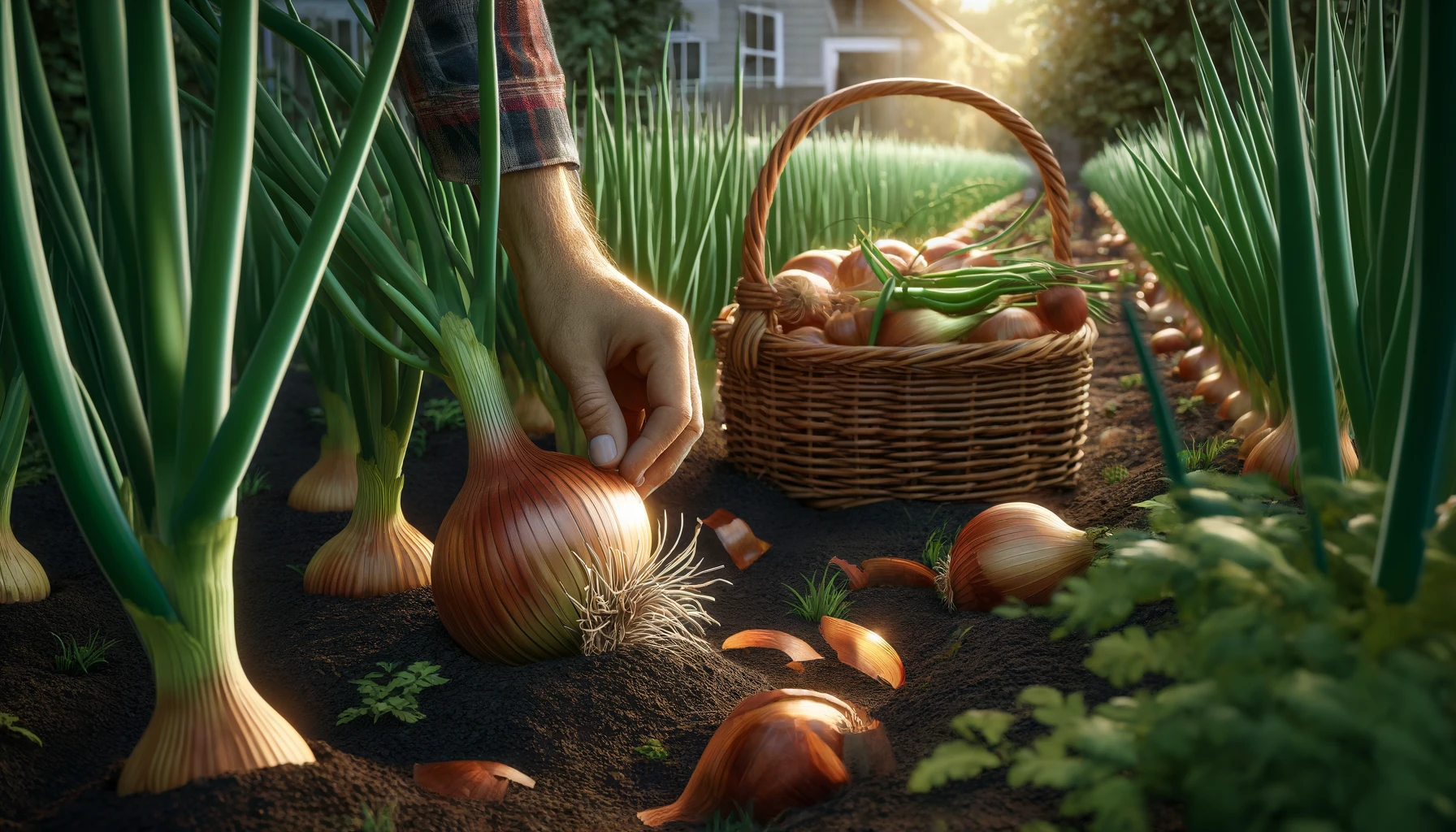Onions are a versatile kitchen staple that are easy to grow in home gardens or containers. Whether you prefer sweet, mild, or pungent onions, growing them at home ensures a fresh supply for cooking. With proper care, onions can thrive in various conditions and produce a bountiful harvest. This guide will walk you through everything you need to know to grow onions successfully.
Choose the Right Onion Variety
Onions come in different types, and choosing the right one depends on your climate and cooking preferences.
By Day Length:
- Short-Day Onions: Best for warm climates; start forming bulbs with 10-12 hours of daylight (e.g., Texas Sweet, Yellow Granex).
- Long-Day Onions: Thrive in cooler climates; need 14-16 hours of daylight (e.g., Walla Walla, Red Burgundy).
- Day-Neutral Onions: Grow well in any region (e.g., Candy, Superstar).
By Use:
- Sweet Onions: Mild flavor, great for salads (e.g., Vidalia, Maui).
- Storage Onions: Stronger flavor, longer shelf life (e.g., Yellow Globe, Sturon).
- Green Onions (Scallions): Quick-growing and used fresh.
Pick the Best Growing Location
Onions need full sun (at least 6-8 hours daily) and well-draining soil for strong bulb formation. Choose a raised bed, garden row, or deep container with loose, fertile soil.
Prepare the Soil for Planting
Onions grow best in light, sandy, or loamy soil that retains moisture but drains well.
- Ideal pH: 6.0-7.0 (slightly acidic to neutral).
- Mix compost or aged manure into the soil for nutrients.
- Avoid compacted soil, which can stunt bulb development.
Planting Onions: Seeds, Sets, or Transplants
Onions can be grown from seeds, sets (small bulbs), or transplants.
How to Plant Onions:
- Sow seeds ¼ inch deep in rows 12 inches apart.
- For sets or transplants, plant them 1 inch deep and 4-6 inches apart.
- Water immediately after planting.
- Mulch with straw or leaves to retain moisture and suppress weeds.
Watering and Mulching
Onions need consistent moisture to develop large, juicy bulbs.
- Water deeply 1-2 times per week, keeping soil evenly moist.
- Avoid overwatering, as onions are prone to rot in soggy conditions.
- Mulch around plants to conserve moisture and prevent weeds.
Fertilizing for Better Growth
Onions require nutrient-rich soil but don’t need excessive feeding.
- Use a balanced organic fertilizer (10-10-10) every 3-4 weeks.
- Boost bulb development with phosphorus-rich fertilizers.
- Avoid high nitrogen after bulbs start forming, as it promotes excess leaf growth.
Prevent Pests and Diseases
Common Pests:
- Onion Maggots: Use row covers and rotate crops.
- Thrips: Spray with neem oil or insecticidal soap.
- Aphids: Introduce ladybugs or use a gentle soap spray.
Common Diseases:
- Downy Mildew: Improve airflow and avoid overhead watering.
- White Rot: Prevent by rotating onion crops yearly.
Harvesting Onions
Onions are ready to harvest when tops start to yellow and fall over.
- For green onions, harvest when they reach 6-8 inches tall.
- For bulb onions, wait until the tops dry out, then pull them from the soil.
- Cure onions in a dry, shaded area for 2-3 weeks before storing.
